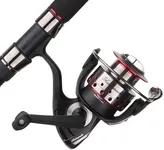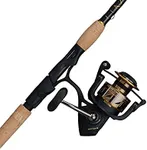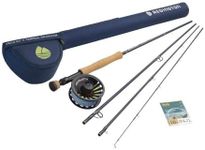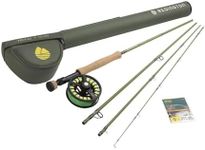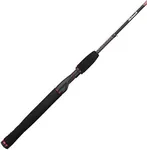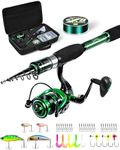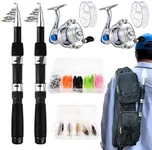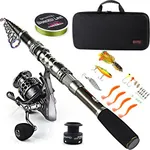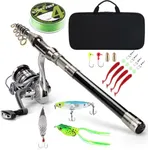Buying Guide for the Best Travel Rods
Choosing the right travel rod can make a significant difference in your fishing experience. Travel rods are designed to be portable and convenient, making them ideal for anglers who are always on the go. When selecting a travel rod, it's important to consider several key specifications to ensure you get the best fit for your needs. Understanding these specs will help you make an informed decision and enhance your fishing adventures.Rod LengthRod length is the measurement from the tip of the rod to the butt. It affects casting distance, accuracy, and the type of fishing you can do. Shorter rods (6-7 feet) are great for close-quarters fishing and provide better control, while longer rods (8-10 feet) allow for longer casts and are better for open water. Choose a length based on where you plan to fish and the type of fish you are targeting.
Rod PowerRod power refers to the rod's resistance to bending under load, often categorized as light, medium, or heavy. Light power rods are suitable for small fish and finesse techniques, medium power rods are versatile and can handle a variety of fish sizes, and heavy power rods are designed for large fish and heavy lures. Consider the size of the fish you aim to catch and the type of lures you will use when selecting rod power.
Rod ActionRod action describes how much and where the rod bends when pressure is applied. Fast action rods bend mostly at the tip and are sensitive, making them ideal for quick hook sets and detecting light bites. Medium action rods bend more towards the middle, offering a balance of sensitivity and flexibility, while slow action rods bend throughout the length, providing a more forgiving and smooth casting experience. Choose the action based on your fishing style and the species you are targeting.
MaterialTravel rods are typically made from graphite, fiberglass, or a composite of both. Graphite rods are lightweight, sensitive, and provide excellent performance, making them ideal for experienced anglers. Fiberglass rods are more durable and flexible, suitable for beginners or those who need a more robust rod. Composite rods offer a balance of both materials, providing a good mix of sensitivity and durability. Consider your experience level and the conditions you will be fishing in when choosing the material.
Number of PiecesTravel rods come in multiple pieces that can be disassembled for easy transport. Common configurations include 2-piece, 3-piece, and 4-piece rods. More pieces make the rod more portable but can slightly affect performance. 2-piece rods are easier to assemble and offer better performance, while 3-piece and 4-piece rods are more compact and convenient for travel. Choose the number of pieces based on your travel needs and how much space you have for storage.
WeightThe weight of the rod affects how comfortable it is to use over long periods. Lighter rods are easier to handle and reduce fatigue, making them ideal for long fishing sessions. Heavier rods may provide more power and durability but can be tiring to use. Consider how long you plan to fish and your physical strength when selecting the weight of the rod.
PortabilityPortability is a key factor for travel rods, as they need to be easy to carry and store. Look for rods that come with a protective case or sleeve for added convenience. Consider the overall length and weight of the rod when packed, as well as how easily it fits into your luggage or backpack. Choose a rod that balances portability with the performance features you need.
